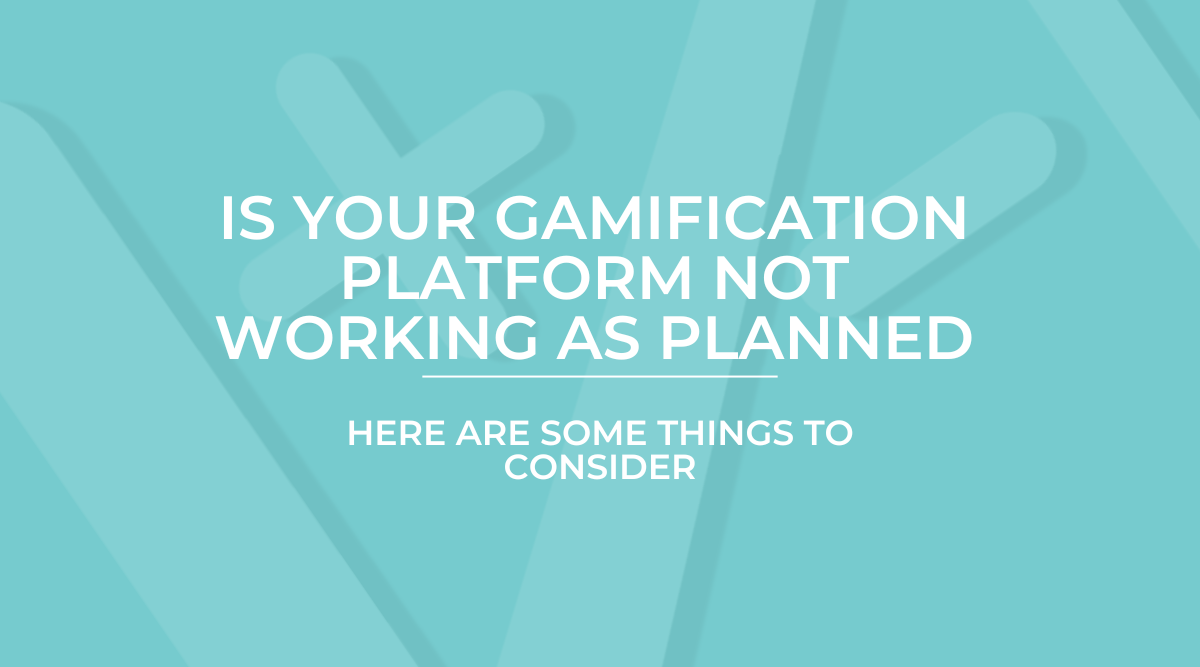As of this 2019 report, 83% of employees felt motivated when their training was gamified, as opposed to 28% when it was not; just 10% felt bored, compared with 49%, respectively. The vast majority, 88% reportedly felt happier. There is also extensive research, and similarly impressive data, on the effectiveness of such training used by such as entities as the U.S. Army and Deloitte. If you’ve read these studies and the flurry of articles out there over the past ten-plus years, you may have concluded that having a gamification platform brings guaranteed success. Well, not necessarily. Like most things in life, gamification is only as good as the people who design and implement it. If you are seeing less-than-stellar results after integrating it into your recruitment, onboarding, or ongoing training, it is time to take an honest look at your platform and the intention behind it to determine whether the two are aligned. If not, here are a few fixes – some simple, some involving an overhaul – that can help you enter the winners’ circle.
Create an Enjoyable Journey
Create an Enjoyable Journey (Not Just a Destination). While you want the rewards of gamification to be enticing (whatever that means for your employees), they should not overshadow the real purpose: to increase performance. Whether your goal is to improve their technical skills or how they interact with clients and each other, that should always be its own reward, with any bonus or prize serving as reinforcement and a means of celebration and appreciation. To this end, make sure the content, be it around factual knowledge or practical skills, is well-structured, interesting, and appropriately challenging, getting more difficult as people advance to keep them engaged. In other words, you want them to enjoy the process, not just reach to the bottom of the cereal box and grab the prize.
Keep the Game in Gamification
Keep the Game in Gamification. The last thing you want to hear is that your employees consider your platform to be punitive. Back in 2008, the Disneyland Resort Hotel in California learned this lesson the hard way when it installed a system of red, yellow, and green lights indicating whether or not the laundry staff’s performance was up to snuff. Employees reportedly felt this was like an “electronic whip,” distracting them and chastising those who were not working quickly enough to meet quotas. It also created a breakdown in relationships among coworkers; people didn’t even go to the restroom so they wouldn’t lose time, and some were even injured. This has become the textbook and oft-cited example of what gamification should not be, so if you’re getting similar feedback from your staff it’s time to re-evaluate. Remember, this is all about carrots, not sticks.
Apply the Right Amount of Pressure
Apply the Right Amount of Pressure. On a related note, you do want to be sure that your platform creates enough “good pressure” to keep users engaged and not feeling like they are being condescended to. For example, there should be consequences (i.e., taking away points) for choices that take them further from their goals. This way, whether they are motivated by the desire or achieve or fear of loss they will want to do their best.
Level the Playing Field
Level the Playing Field. One of the most touted things about gamification is that it fosters a feeling of inclusiveness, so if your platform only focuses on a certain segment of the population you are defeating the purpose. Let’s say, for example, that it centers around the same contest (i.e. the highest sales in a month), you will likely see the same winners over and over again, leaving the others feeling marginalized and probably less motivated. What you might do instead is to create rotating benchmarks for success so that everyone experiences a renewed sense of purpose and the possibility that they will be recognized for what they bring to the table.
Strong Foundations
As mentioned earlier, some of these fixes, such as switching up contests, are easy to implement, while others can involve issues of form or substance that require serious revamping. The best way, of course, is to avoid such things altogether by gathering as much intel as possible from employees at the design stage. With some carefully chosen questions and prompts, you will learn their current level of satisfaction with the company, what they would like to see more of, and what struggles they are experiencing when it comes to their job performance, relating to others, and so on. You’ll likely find that your platform should be one with a balance of difficulty and ease, rewards and consequences, collaboration and competition. That said, you may also find that those needs change with time and circumstances, so be open to spending the money and effort to tweak as needed. The takeaway is that your platform must have a strong foundation tied to immediate goals and the organizational vision while being flexible and fun enough to empower your diverse team of employees.



